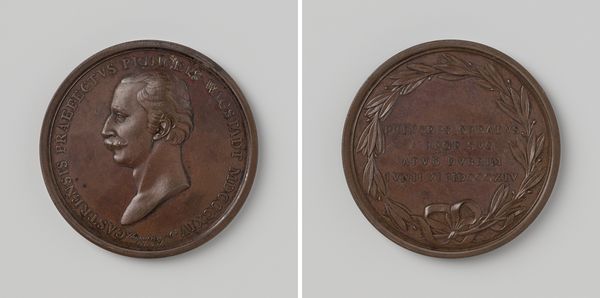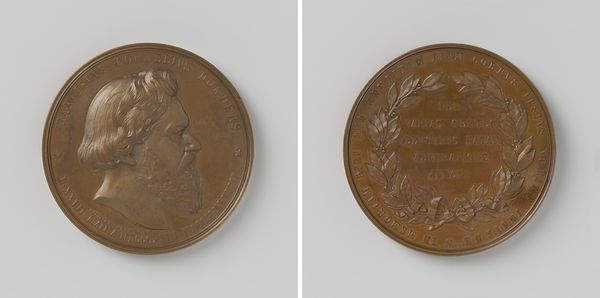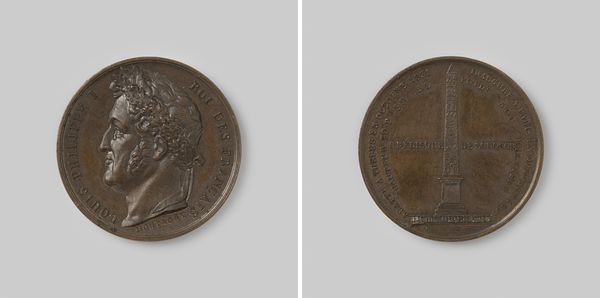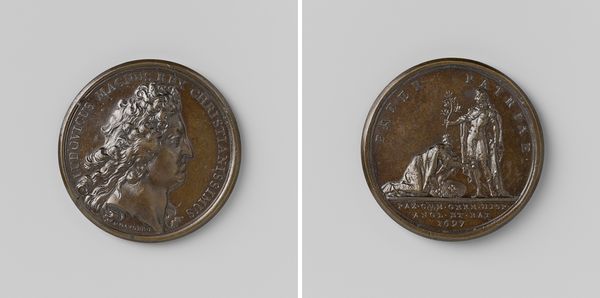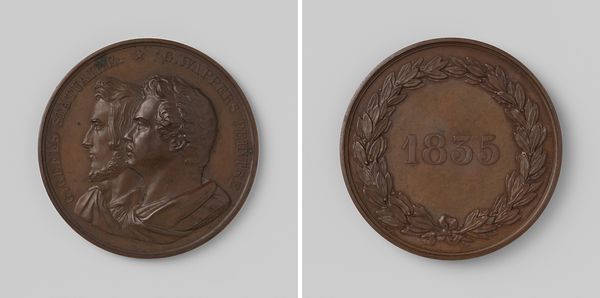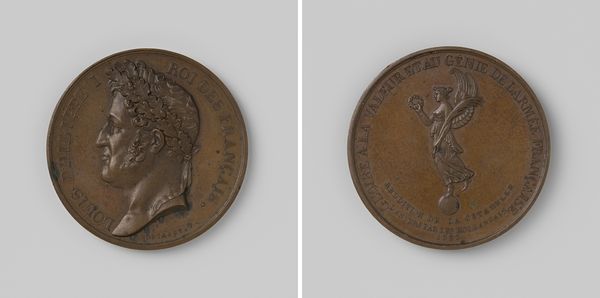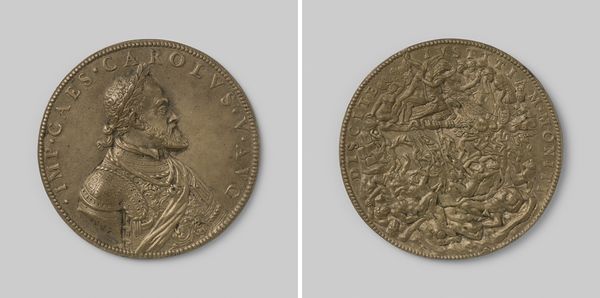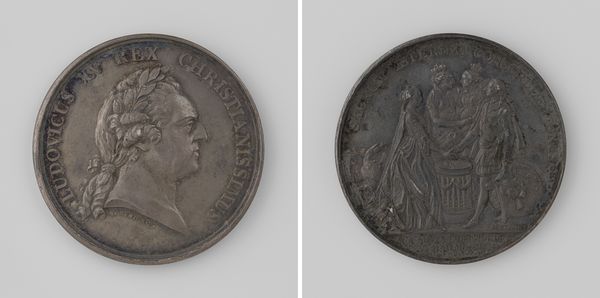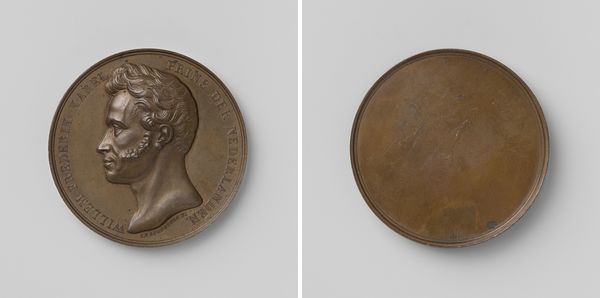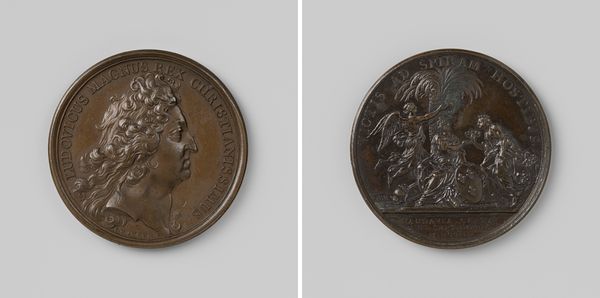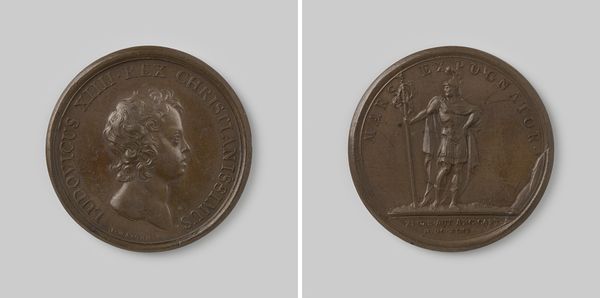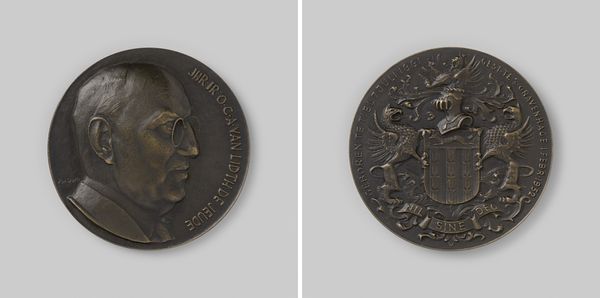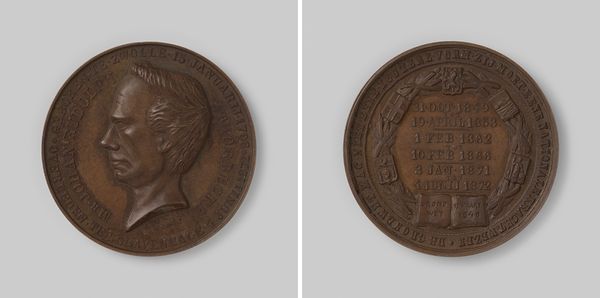
metal, relief, sculpture, engraving
#
portrait
#
neoclacissism
#
metal
#
relief
#
sculpture
#
history-painting
#
engraving
Copyright: Rijks Museum: Open Domain
Curator: This piece is a bronze medal, "Op de instelling van de Militaire Willemsorde," which translates to "On the Establishment of the Military William Order," dating back to 1815 and created by Joseph-Pierre Braemt. Editor: It feels very neoclassical. Stiff, almost…imposing. Like looking at a Roman coin depicting an emperor. The color is somber, and everything is quite formal. What's its purpose? Curator: It commemorates the establishment of the Military William Order, a Dutch order of chivalry. The medal features a profile of King William I, with the reverse showcasing the insignia of the Order, complete with a crown, crossed swords, and laurel wreaths. Editor: Crossed swords always read as violent to me. Considering this was issued in 1815, right after the Napoleonic Wars, the martial symbolism feels particularly pointed. What social function did such honors serve back then? Curator: These medals acted as symbols of national pride and rewarded military merit and loyalty to the newly established Kingdom of the Netherlands. It was also a public performance of power. William I needed to consolidate his rule. Awards were key for nation-building efforts and to build legitimacy and reinforce loyalty. Editor: Right, a way to literally "medal" in the affairs of public sentiment! Did common soldiers get these too, or mostly for officers and the elite? Curator: The Military William Order was technically open to all ranks, but in practice, higher ranks received the more prestigious classes of the Order. Still, even granting it to lower ranks would solidify their commitment to the kingdom. Editor: So, the imagery speaks volumes about power, loyalty, and the role of the military in shaping national identity post-Napoleonic Europe. But what is perhaps even more remarkable is how those symbols have been manipulated over the course of history in various media for diverse purposes. Curator: Indeed, thinking about its original circulation compared to how we might perceive it today is really illuminating. I'm thinking about how these medals and the honors they represent serve a complex symbolic purpose within a constantly changing cultural and political framework.
Comments
No comments
Be the first to comment and join the conversation on the ultimate creative platform.
